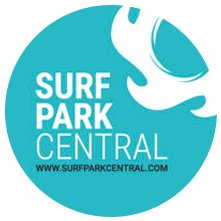By Jess Ponting
When I first took an interest in the emerging surf park industry in 2011, I wanted to try to influence its trajectory so this brand new branch of surfing did not become a mass polluting resource drain. There was clearly an opportunity for surf parks to showcase sustainability innovation – this was already baked into the earliest iterations of The Wave: Bristol concept, and perhaps even as a funding mechanism for surfing places around the world.

I’m transparent about my bias in this direction, so I’ve been interested in finding out if the general surfer population shares these views. I first started surveying the market in 2015 and was pleasantly surprised that most surfers surveyed said they cared about sustainability issues in the context of surf parks. Given this concern, and the projected surge in economic footprint of the industry in the coming years, it feels increasingly possible that surf parks could self-finance in-house sustainability innovation through additional fees and voluntary contributions from guests and potentially become a major force in surf ecosystem conservation funding.
I’d like to run a thought experiment on what might be possible based on available data and future projections. Let’s start with the latest data on sustainability attitudes among the surf park visitor market. In 2024, with the help of some industry partners, I ran a survey of 4,310 people that explored surf park visitor sustainability attitudes. The following heat map shows the global distribution of respondents.
Figure 1. Heat Map of Responses to 2024 Surf Park Survey

The survey revealed strong support for the 10 sustainability initiatives that were investigated. Across the sustainability topics outlined in Table 2 below, between 52% and 75% of respondents agreed or strongly agreed with the need for surf parks to integrate sustainable practices, with only 2% to 7% strongly disagreeing. That’s a clear message of support from the surf park market.
Figure 2. Surf Park User Opinions on Sustainability Measures

Notably:
- Adaptive surfing access and programming led with 75% support.
- Surf therapy followed closely with 69%.
- Sustainability certification received 70% support.
- Ecosystem education and conservation engagement averaged 66%–67%.
Sustainability has become a baseline expectation for many surf park visitors, but how much are they prepared to contribute? The survey asked exactly this question, and the results are shown in Figure 3 along with the responses discounted by 21%, which is standard when allowing for hypothetical reporting bias.
Figure 3. Surf Park Visitors’ Willingness to Pay for Sustainability

Surf park visitors are willing to financially support sustainability initiatives within and beyond the surf park gates. After adjusting for hypothetical bias, the data suggest that, on average, visitors are willing to pay an additional 13.4% for a surf park experience that can demonstrate authentic commitments to environmental, social, and economic sustainability. Beginners and women are prepared to pay even more. This is not a marginal figure—it reflects a significant potential revenue stream for sustainability-related investment for surf parks: onsite and offsite. But how much are we really talking about?
Spending data from the same survey reveal that typical surf park visitors spend between $250–$300 on surf-related activities (e.g., wave sessions, lessons, equipment rentals) and an additional $200–$300 on ancillary expenditures such as food, beverage, retail, and accommodation. Using the lower number in these ranges ($250 + $200), the average total spend per visit for all surf park visitors is $450. Applying the corrected 13.4% premium to this amount yields an additional $60.30 per visitor that could, in theory, be directed toward sustainability programs. Even when using just the $200 non-surfing expenditure figure, the 13.4% premium would still generate $26.80 per visitor.
What might that level of support look like across the entire industry by 2040? Let’s assume that access to financing increases incrementally over time, that surf parks become established as a legitimate real estate asset class, that more multi-park developers enter the space, and that the evolution of additional wave generation technologies will further increase the ability of the industry to scale. The industry will almost certainly add at least an average of 10 surf parks per year through the early-mid 2030s and likely accelerate towards 2040. At this rate, the industry will more than double in terms of operating parks by 2028. It is likely to double again in the following five years to see 100 surf parks operating by 2033. An estimate of 200 operating surf parks by 2040 seems conservative.
Assume there are 200 surf parks in operation in 2040. How many surf sessions and visitors are we talking about?
URBNSURF Melbourne recently claimed that in five years of operation, 10 million waves had been surfed by 300,000 guests – this suggests an average of 33.3 waves per surfing guest, most likely over three surf sessions. Dividing by five to estimate one year of operation, we get 2,000,000 waves per year serving 60,000 surfing guests who surf an average of three sessions per year for 180,000 sessions.
Public financial reporting requirements in the UK reveal the utilization of The Wave: Bristol from its opening during COVID in 2020 (just before URBNSURF Melbourne), which was plagued by lockdowns and closures, through a more than doubling of surf utilization in 2021 and some correction through to 2023. See Table 1 below.
Table 1. The Wave: Bristol Surf Hours Sold and Non-Surf Visitors 2020-2023
| Year | Surf Hours Sold | Non-Surfing Guests |
| 2020 | 75,000 | 37,000 |
| 2021 | 157,000 | 55,000 |
| 2022 | 149,000 | 40,000 |
| 2023 | 142,000 | 44,000 |
Source: UK Government Companies House
The average number of surf hours at The Wave in non-COVID years has been 149,333. Each surf hour consists of 10-12 waves, so conservatively, that equates to 1,493,000 waves per year. The average number of non-surfing visits per non-COVID year has been 46,333. If we extrapolate these numbers out to 200 surf parks, that equates to 29,866,600 surf hours (approximately 300 million waves) and 9,266,600 non-surfing visitors that year, or roughly 40,000,000 surf park visits in a ratio of surfers to non-surfers of roughly 3:1.
If we assume 10 waves per surf hour and take The Wave’s 3:1 ratio of surfers to non-surfers and apply it to URBNSURF Melbourne, we get the following projections and an average between both.
Table 2. Global Surf Park Utilization by 2040 (assuming 200 operating surf parks)
| Utilization Data From | Number of Waves | Number of Surf Hours | Non-Surfing Visitors | Total Number of Visitors |
| URBNSURF | 400,000,000 | 40,000,000 | 13,300,000 | 53,300,000 |
| The Wave | 300,000,000 | 30,000,000 | 10,000,000 | 40,000,000 |
| Average | 350,000,000 | 35,000,000 | 11,650,000 | 46,650,000 |
It should be noted that Wavegarden Cove (the technology used at both URBNSURF and The Wave) surfer capacities are higher than most other technologies and that both surf parks utilize relatively simple, open-to-the-public business models driven by surf hours (with related lessons, rentals, photography and videography) with relatively simple food and beverage and retail businesses in support. Evolving business models and increasingly sophisticated mixed-use developments are likely to increase the number of non-surfing visitors in future developments to the extent that the surf hours to non-surfing visitor ratio may be reversed.
Nevertheless, let’s assume 350 million waves, 35 million surfing visitors and round down to 10 million non-surfing visitors for a total of 45 million visitors per year, and extrapolate what kinds of contributions could be made to support sustainability initiatives.
Table 3. Potential Contributions to Sustainability in 2040
| Contribution Level | Industry Wide | Individual Surf Park |
| 13.4% of $450 spend = $60.30 | $2.713 Billion | $13.6 Million |
| 13.4% of $200 spend = $26.80 | $1.206 Billion | $6.03 Million |
| $10 per visit | $450 Million | $2.25 Million |
| $1 per wave ridden (4% of $200 spend) | $350 Million | $1.75 Million |
| $5 per visit (2.5% of $200 spend) | $225 Million | $1.125 Million |
| $2 per visit (1% of $200 spend) | $90 Million | $450,000 |
| $1 per visit + $0.10 per wave ridden | $80 Million | $400,000 |
| $1 per visit (0.5% of $200 spend) | $45 Million | $225,000 |
| $0.10/wave (0.05% of $200 spend) | $35 Million | $175,000 |
With the number of visitors, the number of waves, and the reported willingness of those visitors to pay more for sustainability in surf parks, the numbers become significant very quickly.
Applying these types of fees, levies, taxes, point of sale round ups, donation opportunities at nominal levels for each visitor could enable surf parks to aggressively pursue their in-house sustainability innovations (perhaps including adaptive surfing and surf therapy programming which ranked highly among potential initiatives) and incorporate them into their branding and messaging as well as supporting surf break ecosystem education and conservation. The adoption of these measures industry-wide at the level of 0.5% – 1% of total spend per visitor, a fraction of what surf park visitors say they are willing to pay, has the potential to be completely transformational on several levels.
In sum, the surf park industry has a unique opportunity to establish a position at the intersection of recreation, real estate, and conservation finance. By leveraging visitor contributions, even well below levels that surf park visitors report being willing to pay, the sector can catalyze substantial environmental benefits, enhance its social license to operate, and meet the demands of a rapidly evolving consumer base—with zero impact on commercial viability.































You must be logged in to post a comment Login